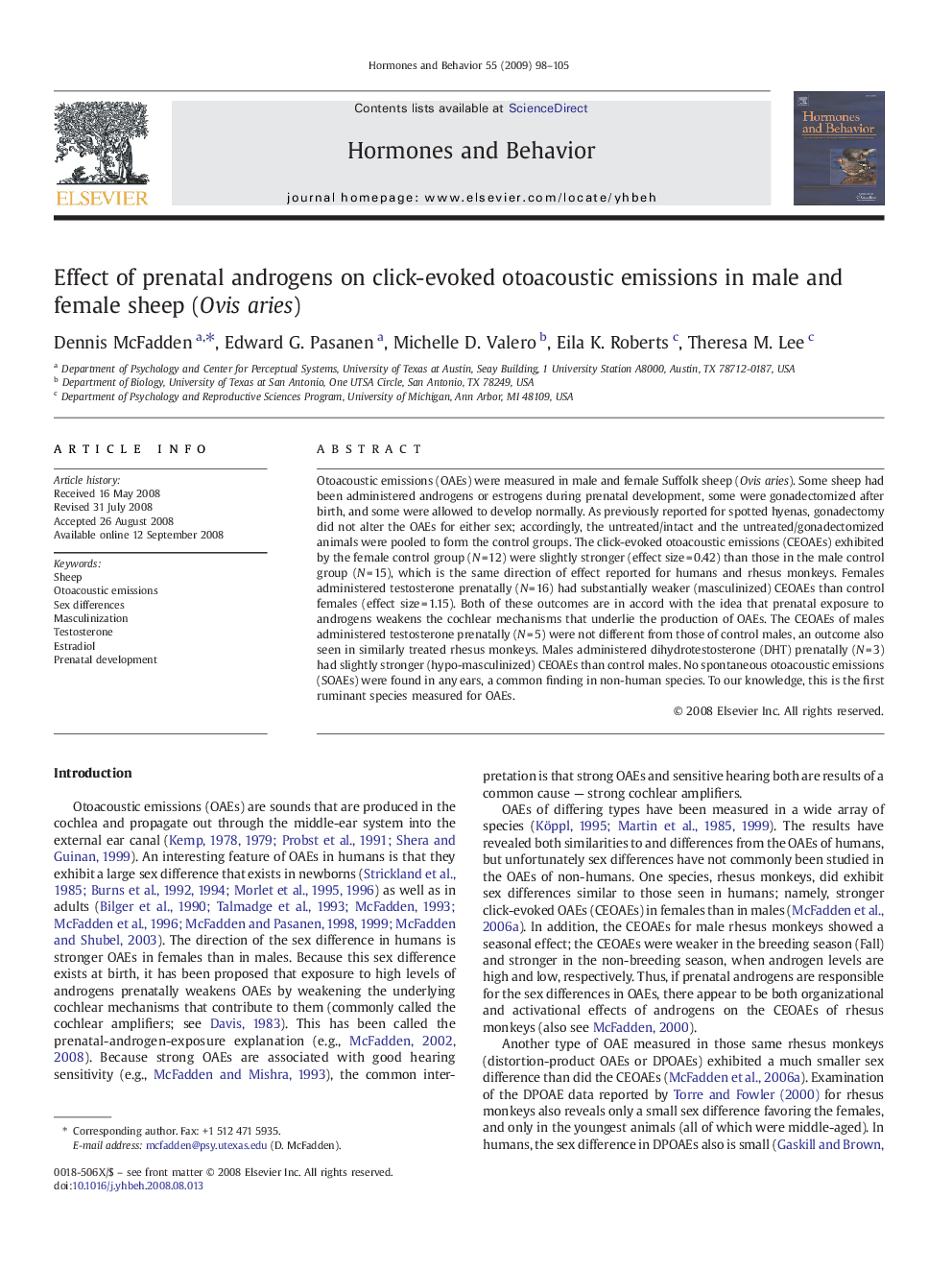| Article ID | Journal | Published Year | Pages | File Type |
|---|---|---|---|---|
| 323243 | Hormones and Behavior | 2009 | 8 Pages |
Otoacoustic emissions (OAEs) were measured in male and female Suffolk sheep (Ovis aries). Some sheep had been administered androgens or estrogens during prenatal development, some were gonadectomized after birth, and some were allowed to develop normally. As previously reported for spotted hyenas, gonadectomy did not alter the OAEs for either sex; accordingly, the untreated/intact and the untreated/gonadectomized animals were pooled to form the control groups. The click-evoked otoacoustic emissions (CEOAEs) exhibited by the female control group (N = 12) were slightly stronger (effect size = 0.42) than those in the male control group (N = 15), which is the same direction of effect reported for humans and rhesus monkeys. Females administered testosterone prenatally (N = 16) had substantially weaker (masculinized) CEOAEs than control females (effect size = 1.15). Both of these outcomes are in accord with the idea that prenatal exposure to androgens weakens the cochlear mechanisms that underlie the production of OAEs. The CEOAEs of males administered testosterone prenatally (N = 5) were not different from those of control males, an outcome also seen in similarly treated rhesus monkeys. Males administered dihydrotestosterone (DHT) prenatally (N = 3) had slightly stronger (hypo-masculinized) CEOAEs than control males. No spontaneous otoacoustic emissions (SOAEs) were found in any ears, a common finding in non-human species. To our knowledge, this is the first ruminant species measured for OAEs.
